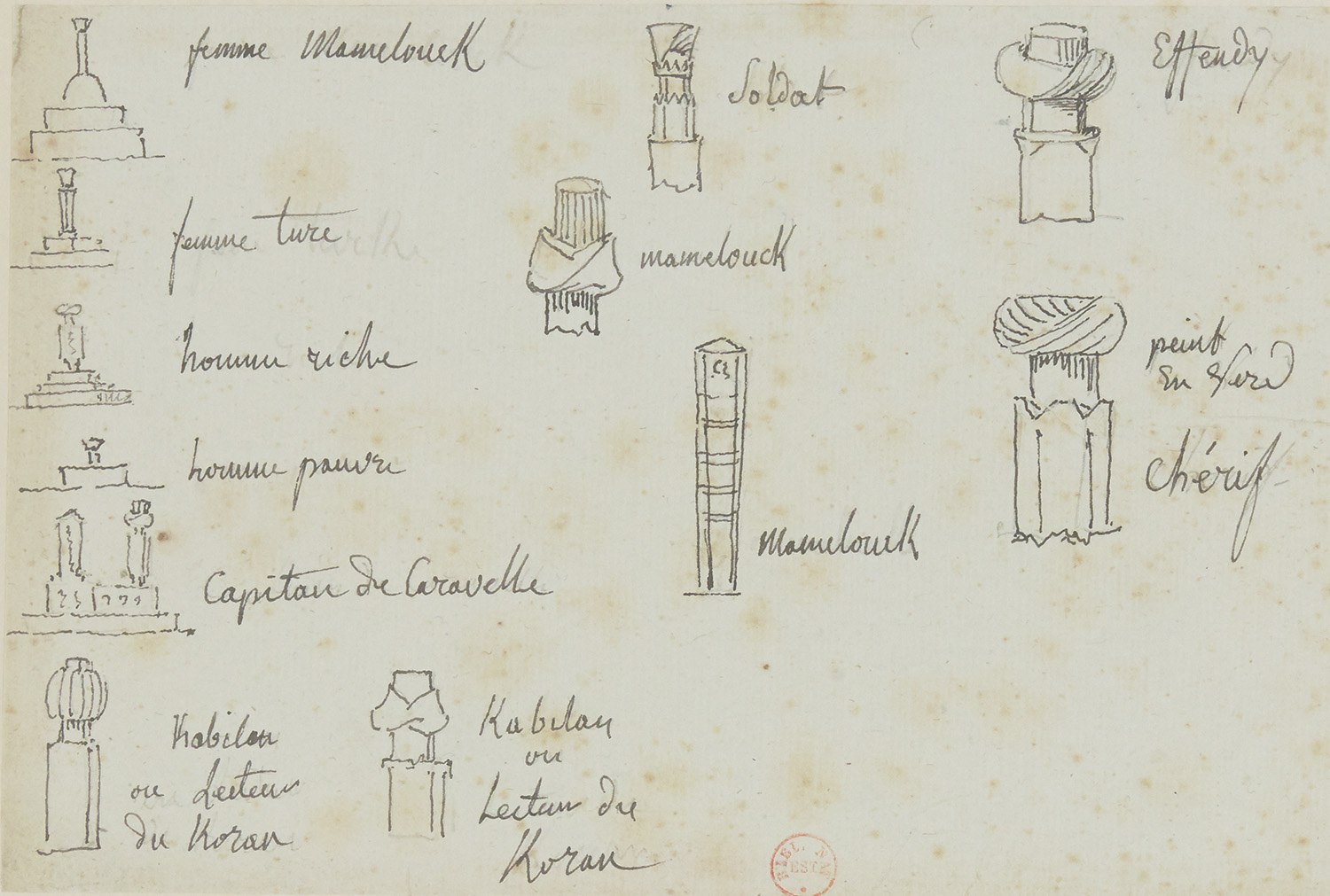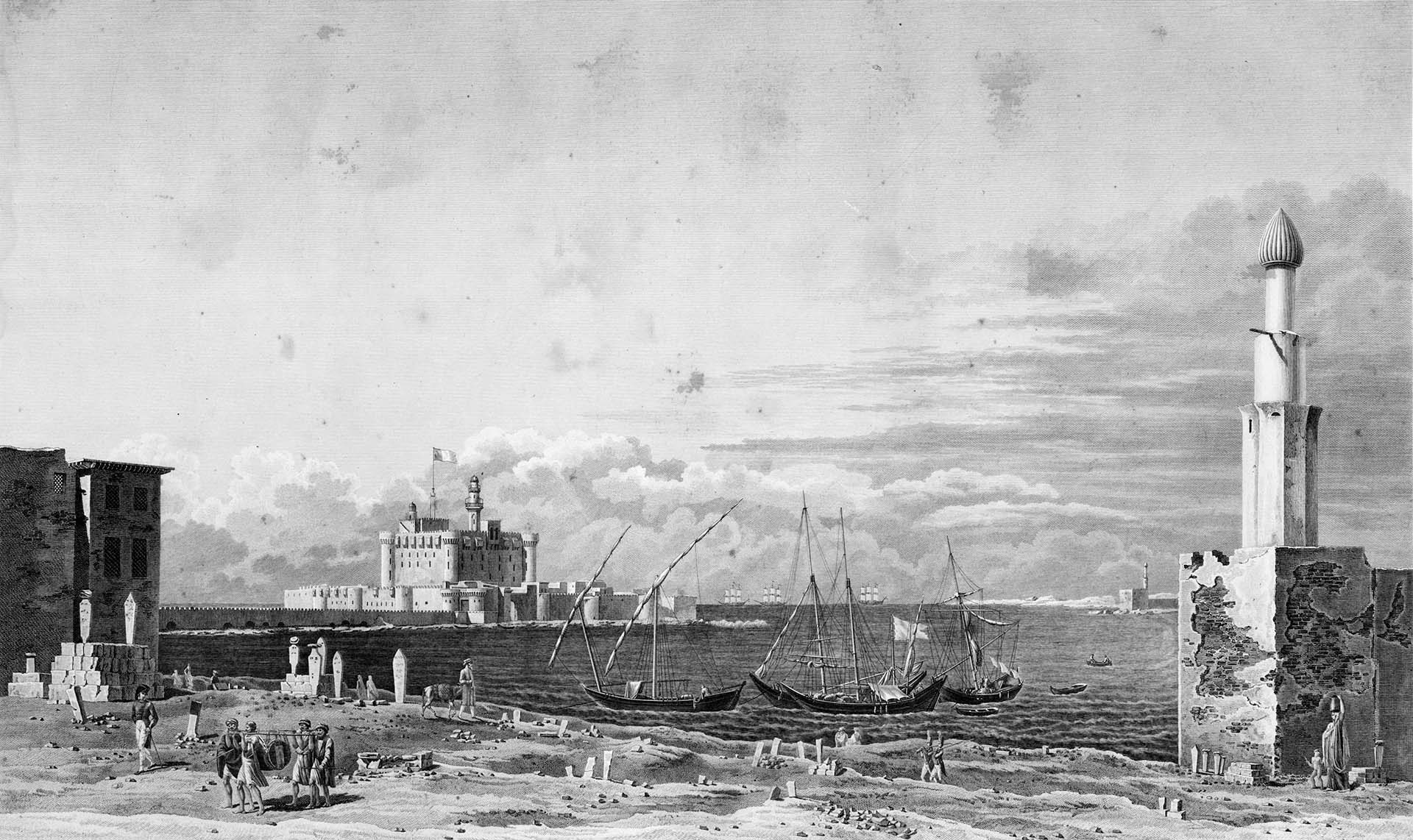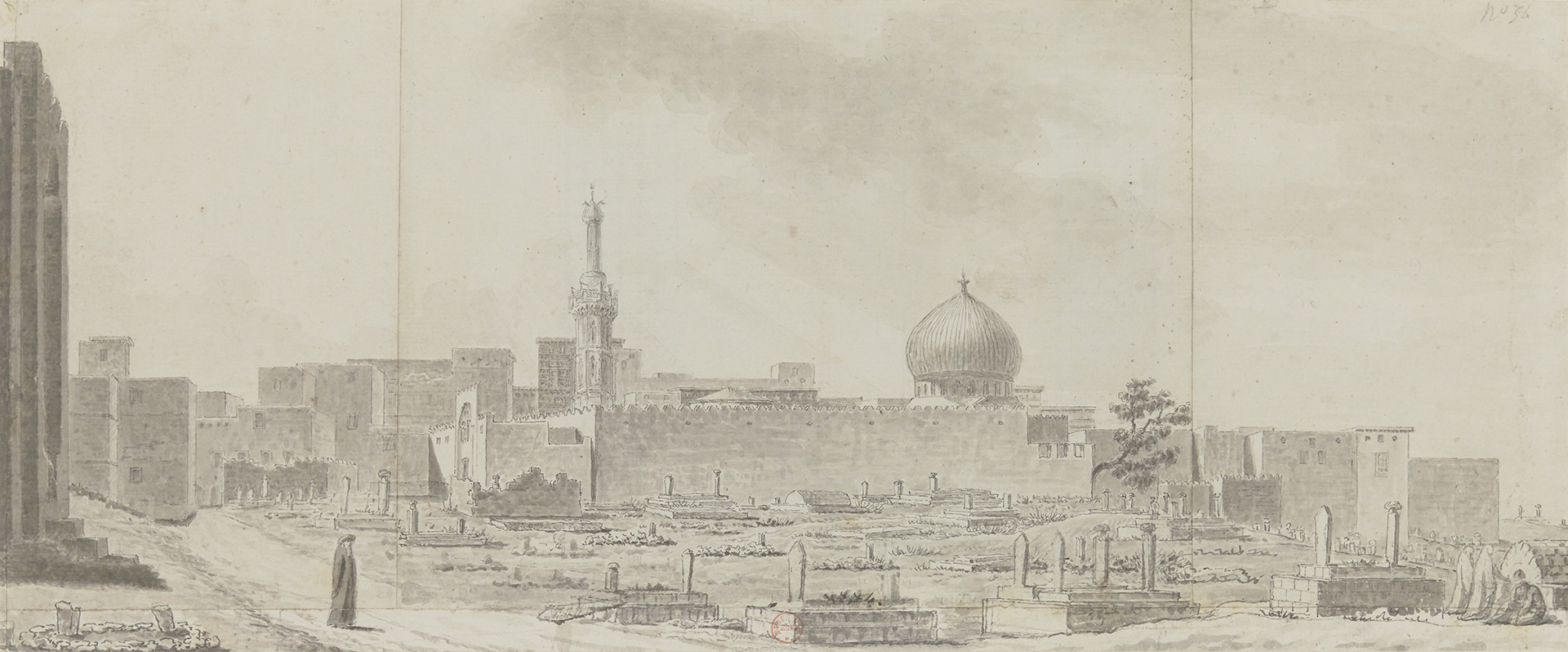Daily life
Cisterns Hammams Ottoman houses Cemeteries and mausoleums Mosques Bazaars and streets Alexandrian portraits
“View of the cemetery”, ink wash, pen and pencil, Nicolas-Jacques Conté, Description de l’Égypte, État moderne, Planches, Vol. 2, pl. 95.1
In the 18th century, the largest Muslim cemetery in Alexandria, called “Place des tombeaux ” by the scholars of the French Expedition, was located on the peninsula to the north of the inhabited city. A cemetery had occupied this space since the Middle Ages but disappeared during the 19th century, however the names of the surrounding mosques still recall the holy figures who were buried there. Funerary mausoleums and mosques are generally distinguished by a dome built over the tomb of the saint. Simple tombs are decorated with head and foot stelae, and the rank of the deceased may be indicated by a sculpted headdress.

Typology des funerary headstones, pen and pencil, Nicolas-Jacques Conté. Previously unpublished.

“View of the New Harbour, taken from the cemetery separating it from the Old Harbour”, intaglio engraving, Nicolas-Jacques Conté, illustrator, Louis Garreau, engraver, Description de l’Égypte, État moderne, Planches, Vol. 2, pl. 85

